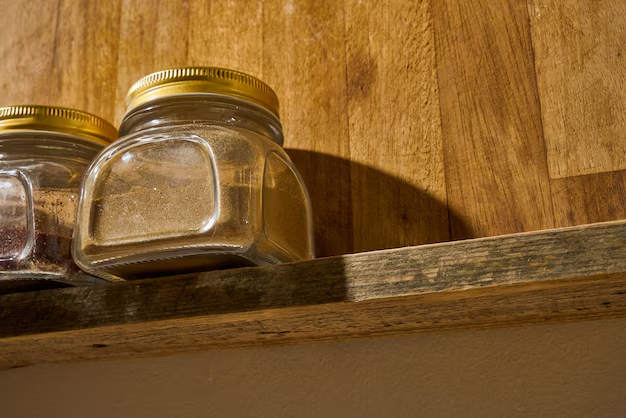How Long Can You Keep Ghee in the Refrigerator?
Imagine opening your refrigerator and finding that jar of ghee you purchased months ago still gleaming in its golden splendor. Perhaps you're wondering, "Is it still good to use?" Ghee, also known as clarified butter, is a staple in many kitchens around the world due to its rich flavor and versatility. But like all foods, it has a shelf life. In this comprehensive guide, we will delve deep into how long ghee lasts in the refrigerator, what factors affect its shelf life, and how you can store it effectively.
🌟 Understanding Ghee: What Makes It So Special?
Ghee is butter that has been simmered to remove all water content and milk solids, leaving behind a pure, golden fat. It’s favored in culinary traditions for its high smoke point, making it perfect for frying and sautéing.
Benefits of Ghee:
- High Smoke Point: At approximately 485°F (252°C), it’s ideal for high-heat cooking.
- Lactose-Free: The milk solids are removed, making it a potential option for those with lactose intolerance.
- Nutrient-Rich: Contains fat-soluble vitamins like A, E, and K.
This unique composition not only provides its distinctive culinary benefits but also contributes to its shelf stability.
📅 How Long Does Ghee Last in the Refrigerator?
In a sealed jar or container: Ghee can last up to a year in the refrigerator. Its clarified nature means ghee is more stable than regular butter, but refrigeration can extend its shelf life even further.
Key Factors Influencing Ghee's Longevity:
- Storage Conditions: Keeping ghee in a cool, dark place, such as a refrigerator, prevents oxidation, which can lead to rancidity.
- Container Quality: Airtight, non-metallic containers help avoid contamination and preserve flavor.
- Exposure to Light and Heat: Reducing exposure minimizes degradation.
🥶 Storing Ghee: Best Practices
To ensure that your ghee remains fresh for as long as possible, consider the following guidelines:
Sealed and Stored Properly
- Use an Airtight Container: Exposure to air can oxidize the fat in ghee, so it's best stored in tightly sealed jars.
- Glass Over Plastic: Glass jars are preferable as they do not interact with the ghee.
Environmental Control
- Cool, Dark Places: When not in use, store ghee in a dark, cool cupboard if you plan to use it quickly, or in the refrigerator for longer storage.
- Away from Stovetops and Windows: Light and heat can hasten spoilage.
Hygiene Tips
- Use Clean Utensils: Always use clean, dry spoons to prevent introducing moisture or contaminants.
- Limit Openings: Minimize the time the jar remains open to prevent air exposure.
🤔 Recognizing Spoiled Ghee: Signs to Look For
Even with optimal storage, ghee can spoil. Knowing when this happens is crucial.
Spoilage Indicators:
- Off Smell: Rancid or sour smells indicate the ghee is no longer good.
- Color Changes: A darkening color or spotted appearance can signal spoilage.
- Taste Alterations: A bitter or off-taste is a clear indicator that the ghee is past its prime.
🌐 Expanding Your Knowledge: Related Topics in Ghee Storage
Alternatives to Refrigeration
Room Temperature Storage: Most ghee can be safely stored at room temperature (out of sunlight and away from heat) for 3-4 months, provided it's in a cool environment.
Beyond Food: Ghee’s Other Uses
- Skincare: Often used in DIY beauty routines for moisturizing properties.
- Ayurvedic Practices: Employed as a base for traditional detox and healing treatments.
📋 Practical Summary: How to Preserve Your Ghee
Here's a handy list of key takeaways to ensure your ghee stays fresh and usable:
- 🔒 Use airtight containers to prevent air exposure.
- 📦 Store in safe environmental conditions to ensure durability.
- 🔎 Always perform a quick smell and taste test before use.
- 🧊 Refrigerate to maximize longevity if consuming ghee infrequently.
Remember, caring for your ghee properly can directly impact its quality and safety, plus keeping this creamy delight as part of your pantry's arsenal ensures flavorful dishes for a long time.
As you master the art of storing ghee, enjoy not just its extended shelf life, but also the rich, robust flavors it continues to bring to your culinary creations. And now, with a comprehensive understanding of its shelf life, you can make informed decisions in your kitchen with confidence.
